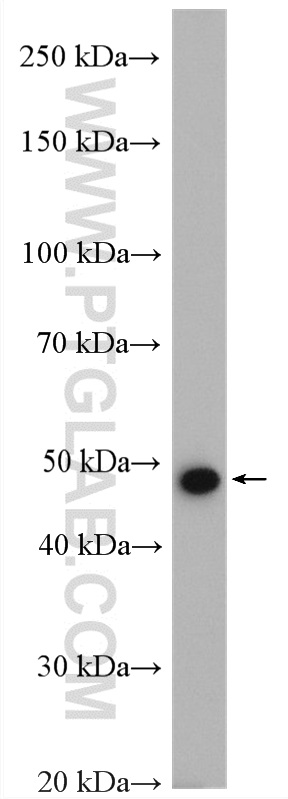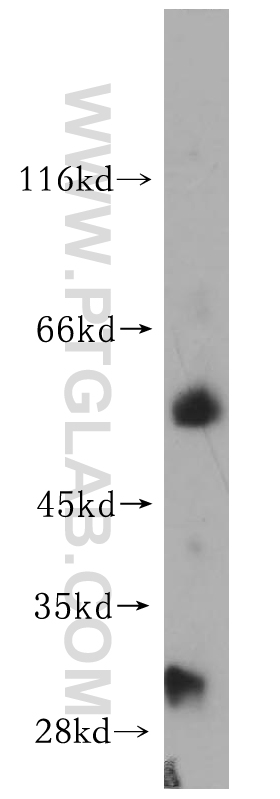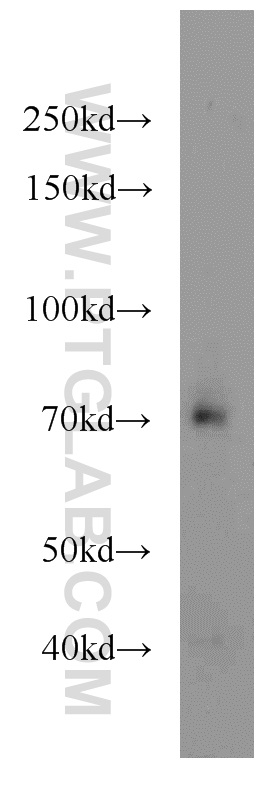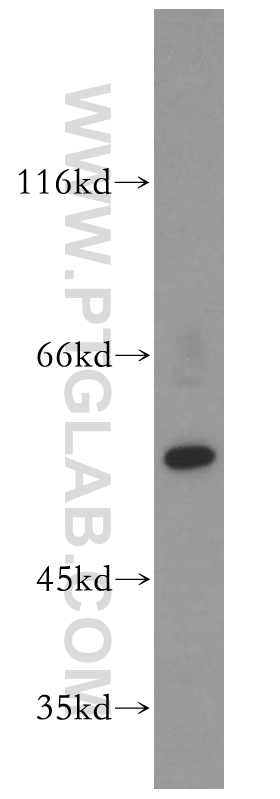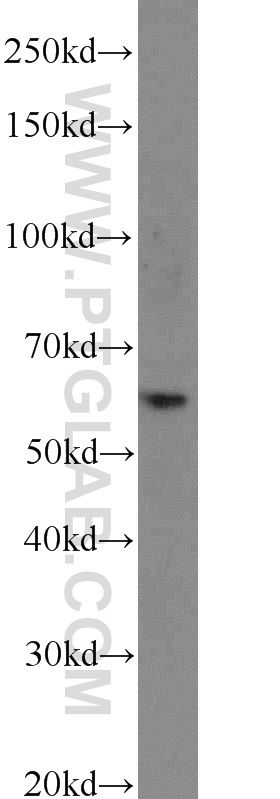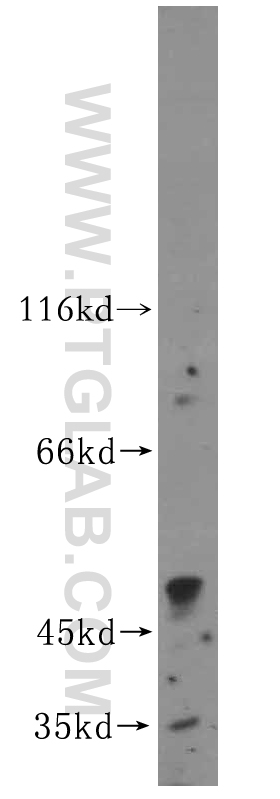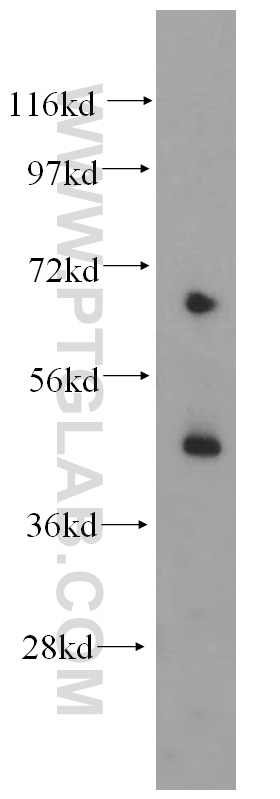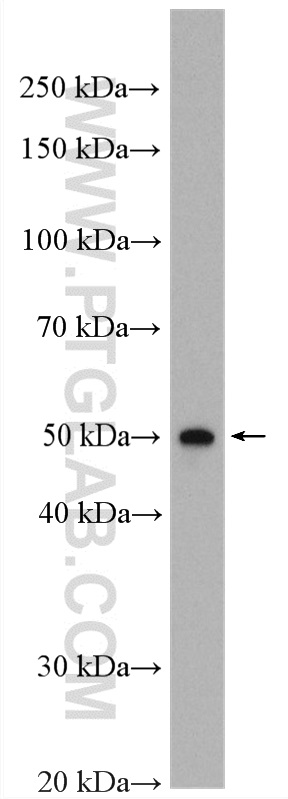Kir6.2 Polyclonal antibody
Kir6.2 Polyclonal Antibody for WB, ELISA
Host / Isotype
Rabbit / IgG
Reactivity
human, mouse, rat
Applications
WB, ELISA
Conjugate
Unconjugated
验证数据展示
经过测试的应用
| Positive WB detected in | rat heart tissue, HepG2 cells, human heart tissue, rat skeletal muscle tissue |
推荐稀释比
| Application | Dilution |
|---|---|
| Western Blot (WB) | WB : 1:200-1:1000 |
| It is recommended that this reagent should be titrated in each testing system to obtain optimal results. | |
| Sample-dependent, Check data in validation data gallery. | |
发表文章中的应用
| WB | See 1 publications below |
产品信息
16920-1-AP targets Kir6.2 in WB, ELISA applications and shows reactivity with human, mouse, rat samples.
| Tested Applications | WB, ELISA |
| Cited Applications | WB |
| Tested Reactivity | human, mouse, rat |
| Cited Reactivity | rat |
| Immunogen | Kir6.2 fusion protein Ag10262 种属同源性预测 |
| Host / Isotype | Rabbit / IgG |
| Class | Polyclonal |
| Type | Antibody |
| Full Name | potassium inwardly-rectifying channel, subfamily J, member 11 |
| Synonyms | BIR, HHF2, IKATP, KCNJ11, KIR6.2, PHHI, TNDM3 |
| Calculated Molecular Weight | 390 aa, 44 kDa |
| Observed Molecular Weight | 48 kDa |
| GenBank Accession Number | BC064497 |
| Gene Symbol | KCNJ11 |
| Gene ID (NCBI) | 3767 |
| RRID | AB_2130461 |
| Conjugate | Unconjugated |
| Form | Liquid |
| Purification Method | Antigen affinity purification |
| UNIPROT ID | Q14654 |
| Storage Buffer | PBS with 0.02% sodium azide and 50% glycerol pH 7.3. |
| Storage Conditions | Store at -20°C. Stable for one year after shipment. Aliquoting is unnecessary for -20oC storage. |
背景介绍
实验方案
| Product Specific Protocols | |
|---|---|
| WB protocol for Kir6.2 antibody 16920-1-AP | Download protocol |
| Standard Protocols | |
|---|---|
| Click here to view our Standard Protocols |
发表文章
| Species | Application | Title |
|---|---|---|
Life Sci KATP channels as ROS-dependent modulator of neurotransmitter release at the neuromuscular junctions | ||
Sci Rep Glucocorticoid receptor-NECAB1 axis can negatively regulate insulin secretion in pancreatic β-cells |
